Table of contents
- The Rickman brothers on the revolutionary Metisse Revolutionary in-house development
- Metisse Mk 5 should be ready for series production soon
- Interview with Don and Derek Rickman
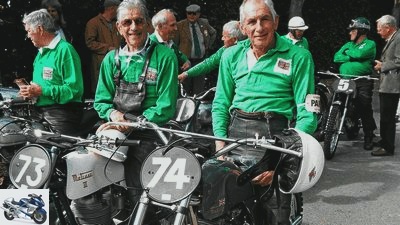
Cathcart
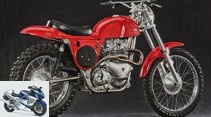
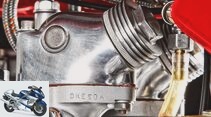
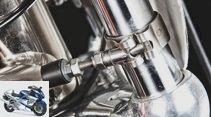
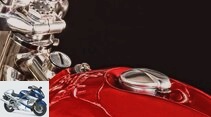
10 pictures
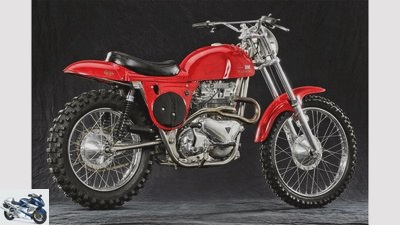
Bilski
1/10
With their Metisse, the Rickman brothers conquered the cross slopes of the world in the early 1960s and laid the foundation for a story that continues to this day.
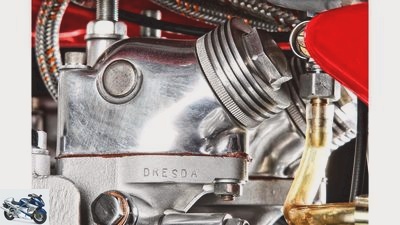
Bilski
2/10
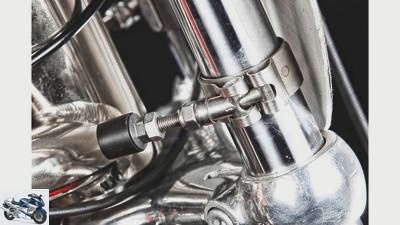
Bilski
3/10
Very British: the finest steel tubing, brazed and nickel-plated.
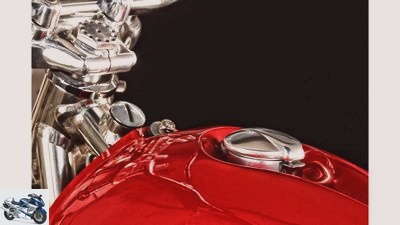
Bilski
4/10
The tank is made of light, fiberglass-reinforced plastic, and the filler neck for the engine oil is located behind the steering head. The frame serves as an oil reservoir. This saves the oil tank and thus weight, and it keeps the oil temperature low.
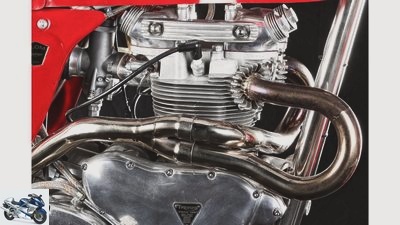
Bilski
5/10
… In offroad sports, tried and tested prepunit engines were used in conjunction with Norton or BSA transmissions even later.
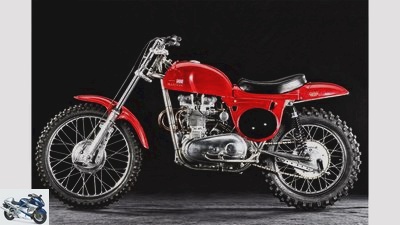
Bilski
6/10

Bilski
7/10
Even if Triumph unit engines were already available from 1960, …
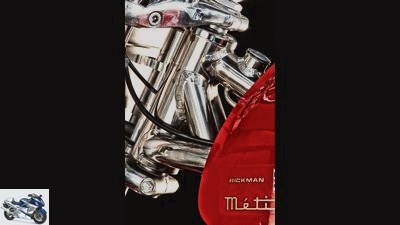
Bilski
8/10
… made of solid Reynolds tubing.
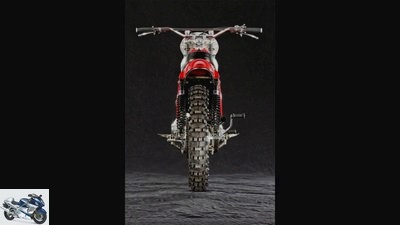
Bilski
9/10
Because the road frames bent or broke, the Rickman brothers developed a real off-road chassis …

Bilski
10/10
Sports & scene
Rickman Brothers on Revolutionary Metisse
The Rickman brothers on the revolutionary Metisse
Revolutionary in-house development
Content of
Originally, the racing-loving Rickman brothers Don and Derek built motorcycles just for themselves. But they were so good that suddenly the whole world wanted the revolutionary Metisse.
Gert Thole, Alan Cathcart
10/11/2013
From a young age, the Rickman brothers Don and Derek were considered huge talents. In 1952, then 17 and 19 years old, they achieved international success on BSA Gold Star. In the mid-1950s, they drove for Royal Enfield for two years, processing so much material that the factory asked them to only race every two instead of every week. They then returned to their Gold Star machines.
Buy complete article
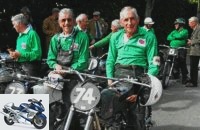
The Rickman brothers on the revolutionary Metisse
Revolutionary in-house development
2 pages) as PDF
€ 2.00
Buy now
In 1958 they founded a small motorcycle workshop. There they worked on turning the Gold Star into a hybrid, a TriBSA. The breakthrough came in 1962 with the first completely in-house development, the revolutionary Metisse Mk3, which soon went into series production. A total of 2000 Mk3 frame kits were created.
A little later, road drivers also discovered the qualities of the stiff Metisse chassis. Bill Ivy won the debut race on his Rickman-Matchless G50 in 1966. Even Giacomo Agostini later acquired a Rickman triumph privately. Rickman also developed eight-valve heads for Triumph engines that Weslake produced. After the end of Norton / Triumph in 1974, the Rickmans built road chassis for the four-cylinder Honda and Kawasaki.
Metisse Mk 5 should be ready for series production soon
At the same time, the first complete off-road motorcycles with 125 and 250 cc two-stroke engines from Bultaco, Montesa and Zundapp, which are now known as “Petite Metisse”, were created. A total of 12,000 motorcycles or frame kits were manufactured in the small factory between 1960 and 1980. In the late 1970s, when demand waned, they started producing motorcycle accessories for end users and for Honda UK, BMX bikes, then even hospital beds, kit cars and a small off-road vehicle.
In 1985 Don and Derek retired into private life. But that was by no means the end of the Rickman machines. The enthusiast Pat French acquired the rights to the name Metisse and continued the production of the Mk3 in his company MRD Metisse in the same design and quality. In 1999, Gerry Lisi, who runs a golf club, got in and the two founded Metisse Motorcycles. Pat French died in 2001. Work is currently underway on the Mk 5 with its own air-cooled twin that produces around 100 hp from 1000 cm3. By the way, Adrian Moss had acquired the rights to the name Rickman, who under Rickman Motorcycles also offers replica frame kits of the Mk3 to this day.
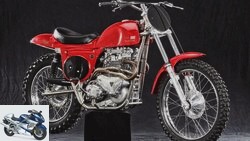
classic
Motocross machine Rickman Metisse
First for yourself, then for the whole world
read more
Impression Rickman Metisse Triumph T 150 V
The right framework
read more

motorcycles
Metisse Desert Racer
Steve McQueen’s bike
read more
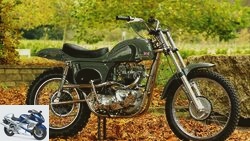
classic
Metisse Triumph Steve McQueen Replica
McQueen’s Desert Racer is being built again
read more
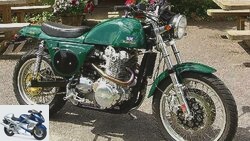
Modern Classic
Driving report Metisse 8V Mark 5
Twin shock
read more
Interview with Don and Derek Rickman
Alan Cathcart was able to speak to the Rickman brothers in late 2008. Both are still in excellent health and meet regularly to play golf with their friend Gerry Lisi.
How did it all start back then??
Derek: Our father Ernie was a speedway driver in the 1930s. After the war he wanted to start trials on a BSA B 32. But in 1946 he died suddenly. We had some land, so as teenagers we practiced with the inherited BSA on wet grass and in the mud. But it was actually a trial machine, so we converted it into a scrambler and then took turns driving it at local races.
When did you become a professional??
Don: Never, we were never really professional drivers. We always went back to work every Monday morning.
What were the most important requirements for the Metisse frame?
Derek: It was crucial for us to keep the front and rear wheels in one lane. This mainly affected the steering head and the swing arm. The road frames of that time were soft as butter and often broke during the races. And the chains jumped off the sprocket because the wings twisted. That’s why we made the rear axle mount very stable and moved the chain adjustment to the swing arm bearing.
Always use the same material?
Don: Yes, always Reynolds 531. We drove to the Reynolds factory, and Ken Sprayson explained to us how we had to process the 531. We always used 16-gauge pipes, i.e. with a wall thickness of 1.5 millimeters, for the production frames. For our own and special frames, however, we used 18 gauge, which corresponds to 1.2 millimeters.
Derek (laughs): In line with Eric Cheney’s philosophy: what doesn’t break is too heavy.
When was the oil in the frame?
Don: In our framework from the beginning. Back then, towards the end of 1958, we reinforced and rebuilt the BSA frame, which resulted in the Metisse Mk1, actually a TriBSA. A lot of oil fit into the frame tubes, where it stays cool by circulating. And you save the space for the oil tank, so you can use a large air filter. At the end of the 1960s, Rickman was a real motorcycle manufacturer.
Derek: That’s right, at one point we were the largest motorcycle manufacturer in the UK. We got small two-stroke engines and made complete motorcycles. At the best of times, around 1970, we were shipping a container of 70 machines to the US every week. At that time we had over 130 employees.
But why did it suddenly end??
Derek: The market changed. Even in the large 500cc class, the four-stroke engines were outdated when the two-stroke engines appeared there too. Husqvarnas, Maicos and stuff like that. And in the USA our little two-stroke engines came to an end because our importer, BSA USA, went bankrupt. This is interesting, by the way: in the USA we worked with BSA, nothing worked in England. All British manufacturers were never interested in us; on the contrary, they boycotted us. We were very early with Triumph, Norton, BSA and Matchless with our frames – but nobody was interested. Back then we didn’t want any money, we only wanted good material in exchange, a few machines for ourselves. Quite naive back then, but we were only racing drivers and had our small motorcycle shop. It pissed us off when Norton boss Bert Hopwood once called us “cowboy brothers”. But we were still around after 20 years, all the British companies had disappeared.
How did it come about that the name Rickman did not pass to Pat French?
Derek: When motorcycle and frame production came to an end, we had several companies that produced different things. We needed space for our kit cars, so we gave the Honda line of accessories to Fowlers, who continued to sell them under the Rickman name. But they hadn’t registered the name – and suddenly our friend Adrian Moss had acquired the rights. In retrospect, it all went stupid.
How did the name Metisse continue??
Derek: Pat French and his little company MRD were only interested in the fat four-stroke crossers. In 1986 we gave him the naming rights to the Metisse Mk3 and everything that was still there, the entire frame production. We also thought at the time that the era of the big four-stroke crossers was over and would never come back. Pat then somehow kept it going until suddenly, in the mid-1990s, demand for the pre-65 veteran class rose rapidly. Because everything then became too big for him alone, Gerry Lisi got in with him.
What do you think about the new Metisse??
Don: She is fantastic. It’s really great to see how something from 1958 outlasts the ages. And the Mk5 carries the spirit of Metisse, especially since it also comes as a classic scrambler.
Derek: It’s pretty exciting for us. As boys we came into contact with motorcycles as early as 1940, grew up with them, were successful racing drivers and manufacturers, and in 1990 everything was actually over. And now something completely new is emerging from it.
Are you proud that the name Metisse lives on now??
Derek: Oh yeah really. In all honesty, we never believed that Gerry would make it and build a completely new bike. After all, we know best what that means.
Related articles
-
Impression Rickman Metisse Triumph T 150 V
motorcycles Impression Rickman Metisse Triumph T 150 V Impression Rickman Metisse Triumph T 150 V The right framework The brothers Don and Derek Rickman…
-
Nakamura motorcycles Metisse Desert Racer Metisse Desert Racer Steve McQueen's bike the rest is still waiting! Steve McQueen was not only a movie…
-
Motorcycle production, part 1: Honda
Jahn 15th pictures Jahn 1/15 How are motorcycles produced? Where do the parts come from, what happens before final assembly? These questions urged…
-
Motorcycle parts-Bielefeld classic spare parts
Siemer counselor traffic & business Motorcycle parts-Bielefeld classic spare parts Motorcycle parts Bielefeld The slaughterhouse for motorcycle…
-
Report: This is how Triumph produces motorcycles
triumph motorcycles Report: This is how Triumph produces motorcycles Report: This is how Triumph produces motorcycles Where and how are the two and three…
-
Motorcycle production at Bimota
Jahn counselor traffic & business Motorcycle production at Bimota This is how one of the smallest manufacturers in the world produces Motorcycle…
-
Spotlight on motorcycle production, part 3: BMW
Bilski 13th pictures Bilski 1/13 A location with tradition – the oldest halls of the Spandau plant have been in existence since 1928, and since 1939 it…
-
The small ABC of motorcycle types, part 1 A ?? D.
Buell motorcycles The small ABC of motorcycle types, part 1 A ?? D. The small ABC of motorcycle types, part 1 A ?? D. ETV 1000 XB9R S4R Manufacturers…
-
Diesel motorcycle meeting in Hamm-NRW
Siemer Sports & scene Events Diesel motorcycle meeting in Hamm / NRW Diesel meeting in Hamm / NRW Motorcycles with diesel engines The industry sees no…
-
The most beautiful motorcycles
motorcycles The most beautiful motorcycles The most beautiful motorcycles Ideal lines It is said that beauty is in the eye of the beholder. Nevertheless,…